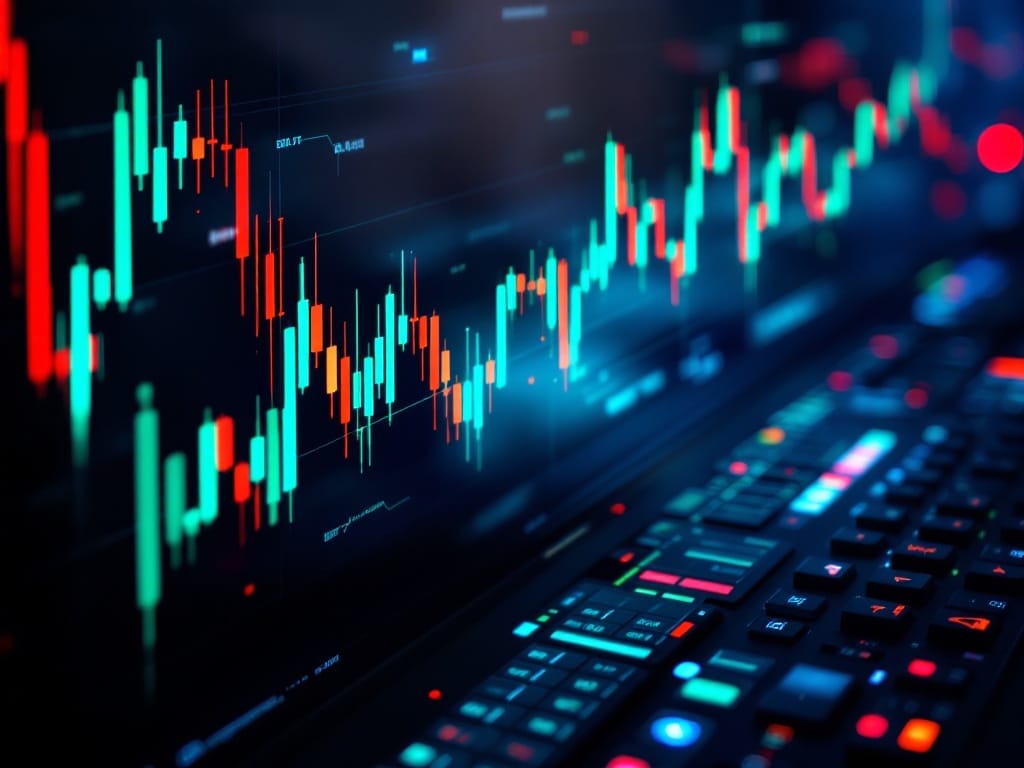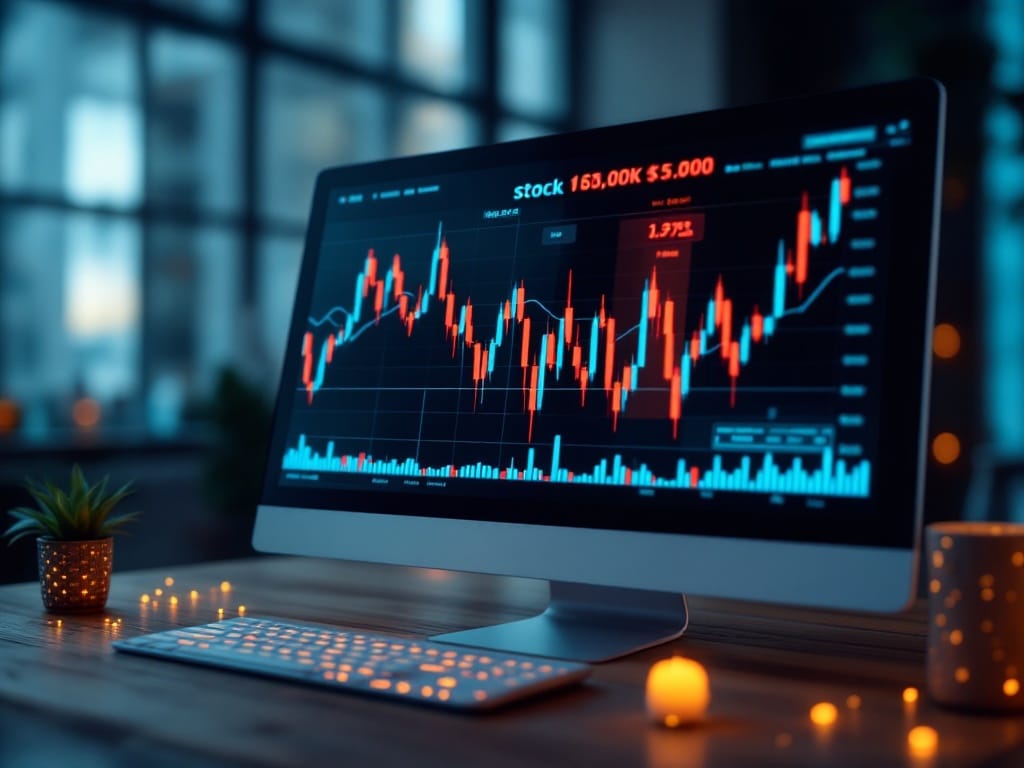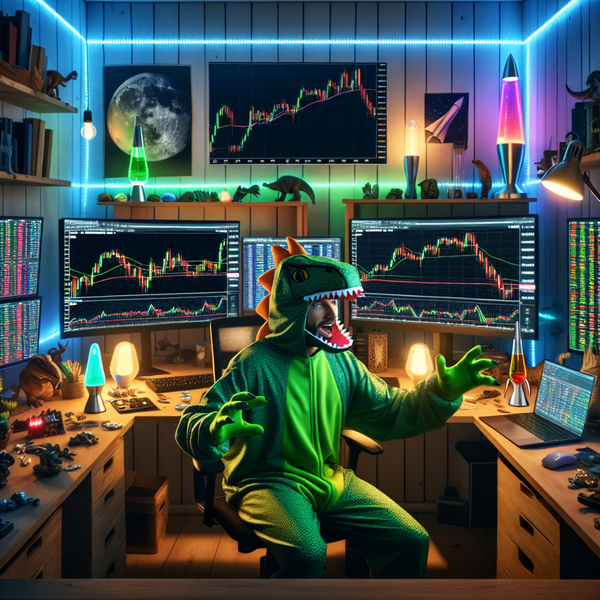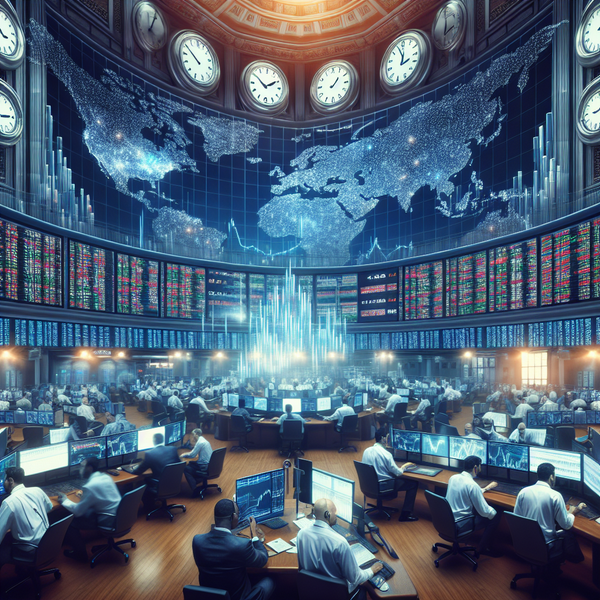What Is the Managed Futures ETF Strategy?

Introduction
What are managed futures? This question is essential for investors looking to understand these sophisticated investment vehicles. Managed futures ETFs have gained significant traction. Managed futures ETFs have gained significant traction among savvy investors looking to diversify their portfolios and reduce risk. These unique investment vehicles blend the dynamic world of futures trading with the accessibility of ETFs (Exchange-Traded Funds). By combining systematic strategies with a focus on various asset classes like commodities, currencies, and interest rates, managed futures ETFs offer a robust and flexible way to navigate ever-changing markets.
But what makes managed futures ETFs so appealing? How do they work, and why should they be on your radar? Let’s dive in to uncover the details of this fascinating investment strategy.
What Are Managed Futures ETFs?
Managed futures ETFs are specialized exchange-traded funds designed to track the performance of managed futures strategies. These funds typically use futures contracts to gain exposure to a broad range of asset classes, such as commodities, currencies, interest rates, and stock indices.
The Role of ETFs in Accessible Trading
Unlike a traditional managed futures account that requires substantial capital, ETFs have revolutionized investing. ETFs have revolutionized investing by offering simplicity, transparency, and liquidity. Managed futures ETFs take this a step further by packaging complex futures trading strategies into an easy-to-trade format. No need to directly trade futures contracts or manage margin requirements—investors can simply buy shares of the ETF, gaining exposure to sophisticated trading strategies with minimal effort.
Why Invest in Managed Futures ETFs?
Managed futures ETFs bring several advantages to the table, making them a compelling option for investors seeking diversification and risk management.
Diversification Benefits of Managed Futures
Managed futures ETFs spread investments across multiple asset classes, reducing reliance on traditional stocks and bonds. Whether it’s gold, oil, or foreign currencies, these funds provide exposure to markets that may behave differently than equities during economic downturns.
How Managed Futures Can Reduce Portfolio Risk
One of the standout features of managed futures strategies is their ability to perform well in volatile markets. These strategies often include trend-following techniques, which capitalize on market momentum—whether upward or downward. By incorporating managed futures ETFs into your portfolio, you can potentially smooth returns and reduce overall risk.

How Managed Futures ETFs Work
Understanding how managed futures ETFs operate can help demystify their role in your portfolio.
The Basics of ETF Futures Trading
Managed futures ETFs use futures contracts to track the price movements of underlying assets. Fund managers employ systematic strategies to decide when to go long (buy) or short (sell) on these futures contracts. These decisions are often driven by algorithms and quantitative models, removing emotional bias from the equation.
Trend Following in Managed Futures ETFs
Trend-following is a core aspect of many managed futures strategies. By identifying and capitalizing on sustained market trends, these ETFs can generate returns regardless of whether markets are bullish or bearish. For example, if crude oil prices are consistently rising, a managed futures ETF might hold long positions in oil futures to benefit from the trend.

Key Components of a Managed Futures ETF Strategy
Managed futures strategies are multi-faceted, with key components that make them unique compared to other investment options.
Systematic Trading in Futures ETFs
Systematic trading relies on predefined rules and algorithms to execute trades. This disciplined approach eliminates human error and ensures consistency in decision-making, a hallmark of managed futures ETFs.
A managed futures strategy offers traders a sophisticated approach to diversifying their investment portfolio through futures contracts. This investment approach involves professional traders or commodity trading advisors (CTAs) who actively manage a portfolio of futures contracts across various markets, including commodities, currencies, and financial instruments.
Unlike traditional buy-and-hold methods, a managed futures strategy can take advantage of both upward and downward price movements, providing potential returns regardless of market direction. This flexibility, combined with the strategy's inherent diversification benefits, makes it an attractive option for investors looking to enhance their portfolio's risk-adjusted returns while maintaining professional oversight of their trading activities.
Commodities in Managed Futures ETFs
Commodities like gold, silver, and agricultural products play a central role in managed futures strategies. By incorporating these assets, managed futures ETFs provide a hedge against inflation and economic uncertainty.
Interest Rates on Managed Futures
Interest rate futures allow managed futures ETFs to profit from changes in interest rates. For instance, during periods of rising rates, these ETFs might short interest rate futures to benefit from the decline in bond prices.
Currency Exposure in Managed Futures ETFs
Currency futures are another critical component, offering exposure to foreign exchange markets. This can be particularly useful for investors looking to diversify away from a single currency or hedge against currency fluctuations.
Comparing Managed Futures ETFs with Other Investment Options
To truly appreciate the value of managed futures ETFs, it’s worth comparing them to other investment vehicles. Various managed futures funds provide different approaches to the market. When selecting a managed futures fund, investors should consider looking at the strategy of the ETF they are selecting.
Managed Futures Mutual Funds vs. ETFs
While both managed futures mutual funds and ETFs offer exposure to futures strategies, ETFs typically come with lower fees, enhanced liquidity, and real-time trading capabilities.
Managed Futures ETFs vs. Direct Futures Trading
Directly trading futures contracts requires significant expertise, large capital reserves, and active management. Managed futures ETFs simplify this process, making futures strategies accessible to everyday investors.
ETF Futures Trading vs. Stock Market Investments
Unlike traditional stock market investments, managed futures ETFs thrive in both upward and downward trends. This flexibility makes them an excellent complement to equity-heavy portfolios.
Managed Futures ETFs vs. Bonds
While bonds are often considered a safe haven, they may underperform during rising interest rates. Managed futures ETFs, on the other hand, can adapt to such environments by shorting interest rate futures.
How to Choose the Best Managed Futures ETF
Not all managed futures ETFs are created equal. Here’s how to identify the best options for your portfolio.
Criteria for Selecting the Best Managed Futures ETF
Look for ETFs with a strong track record, robust management teams, and a clear investment strategy. Understanding the fund’s objectives can help you align it with your financial goals.
Evaluating Performance Metrics
Examine key metrics like historical returns, Sharpe ratio, and maximum drawdown to assess the ETF’s risk-adjusted performance. Evaluating Performance Metrics are the key indicators and benchmarks used to assess a trader's effectiveness and risk management capabilities, typically including metrics such as maximum drawdown, profit factor, win rate, and risk-adjusted returns. These metrics provide a comprehensive view of trading performance, helping traders and prop firms like FFN determine if a strategy is viable and if a trader is consistently following their trading plan.
Assessing Fees and Costs
Managed futures ETFs often come with higher expense ratios compared to traditional ETFs. Be sure to weigh these costs against potential benefits.
Understanding Liquidity and Trading Volume
High liquidity and trading volume ensure that you can easily buy or sell shares of the ETF without significantly affecting its price.
Trade volume, which represents the total number of contracts traded during a specific period, is a crucial indicator that helps traders understand market participation and validate price movements. High trading volume during a price move typically indicates stronger market conviction and more reliable trends, while low volume suggests weaker participation and potentially less reliable price action. Understanding volume patterns can give traders a significant edge in their decision-making process, as increasing volume often confirms trend strength while decreasing volume might signal potential trend reversals or the need for caution.
Conclusion: Maximizing Returns with Managed Futures ETFs
Managed futures ETFs offer a compelling blend of diversification, risk management, and accessibility. By incorporating these funds into your investment strategy, you can navigate volatile markets with confidence and potentially enhance your overall portfolio performance. Whether you’re a seasoned trader or a casual investor, managed futures ETFs are worth exploring for their unique benefits.
FAQs About Managed Futures ETFs
What Is the Advantage of Managed Futures ETFs Over Traditional Investments?
Managed futures ETFs provide diversification and the ability to profit in both rising and falling markets, making them a valuable addition to traditional portfolios.
How Do Managed Futures ETFs Handle Market Volatility?
These ETFs often thrive during periods of high volatility, as their trend-following strategies capitalize on market momentum.
During periods of heightened volatility, these ETFs can quickly adjust their positions through systematic trading approaches, potentially providing valuable portfolio diversification when traditional investments struggle. The ability of Managed Futures ETFs to adapt to changing market conditions makes them particularly effective at capturing opportunities during volatile periods while also offering investors a liquid, transparent vehicle for accessing professional futures trading strategies.
What Are the Key Risks with Managed Futures ETFs?
Risks include higher fees, potential underperformance during flat markets, and the complexity of underlying strategies.
Can Managed Futures ETFs Provide Income?
Traditional managed futures accounts often require substantial minimums, while managed futures ETFs offer lower entry points.
How Often Should I Review My Managed Futures ETF Investments?
Regular review of performance metrics, risk measures, and strategy adherence is essential for managed futures investments.
While Managed Futures ETFs are designed for systematic trading, it's recommended to review your investments at least monthly to ensure they're aligned with your overall portfolio strategy and risk management goals. However, more frequent weekly reviews may be beneficial during periods of significant market volatility or when major economic events could impact multiple asset classes. The key is to strike a balance between maintaining a long-term perspective while staying informed enough to make necessary adjustments to your position sizing or overall allocation based on changing market conditions and your investment objectives.
FAQs About Funded Futures Network
What Services Does Funded Futures Network Offer?
Funded Futures Network provides proprietary trading accounts, allowing traders to trade futures with access to capital and retain profits after meeting evaluation requirements.
What Types of Accounts Can I Open with Funded Futures Network?
FFN offers funded trading accounts with sizes ranging up to $250,000, depending on your performance during the evaluation process.
How Can Funded Futures Network Help in Managed Futures Trading?
FFN supports traders by offering access to capital, advanced trading tools, and a community-driven environment to enhance trading performance.
What Makes Funded Futures Network Different from Other Trading Platforms?
FFN stands out for its focus on trader success, excellent customer support, and a strong community of like-minded traders. You can use any platform that connects to Rithmic or you can use one of the two trading platforms offered at FFN.
Can International Clients Trade with Funded Futures Network?
Yes, FFN welcomes international clients, providing access to its funded trading programs globally. You can see the list of restricted countries on the FAQ page of our website.
What Are the Tax Implications of Trading with Funded Futures Network?
Tax implications vary by jurisdiction. It’s recommended to consult with a tax professional to understand your specific obligations.
Managed futures ETFs are a powerful tool for navigating the complexities of modern markets. By understanding their strategies and benefits, you can make informed decisions that align with your investment goals. Whether you’re a seasoned investor or new to the world of futures, these ETFs provide a pathway to greater diversification and risk-adjusted returns.



